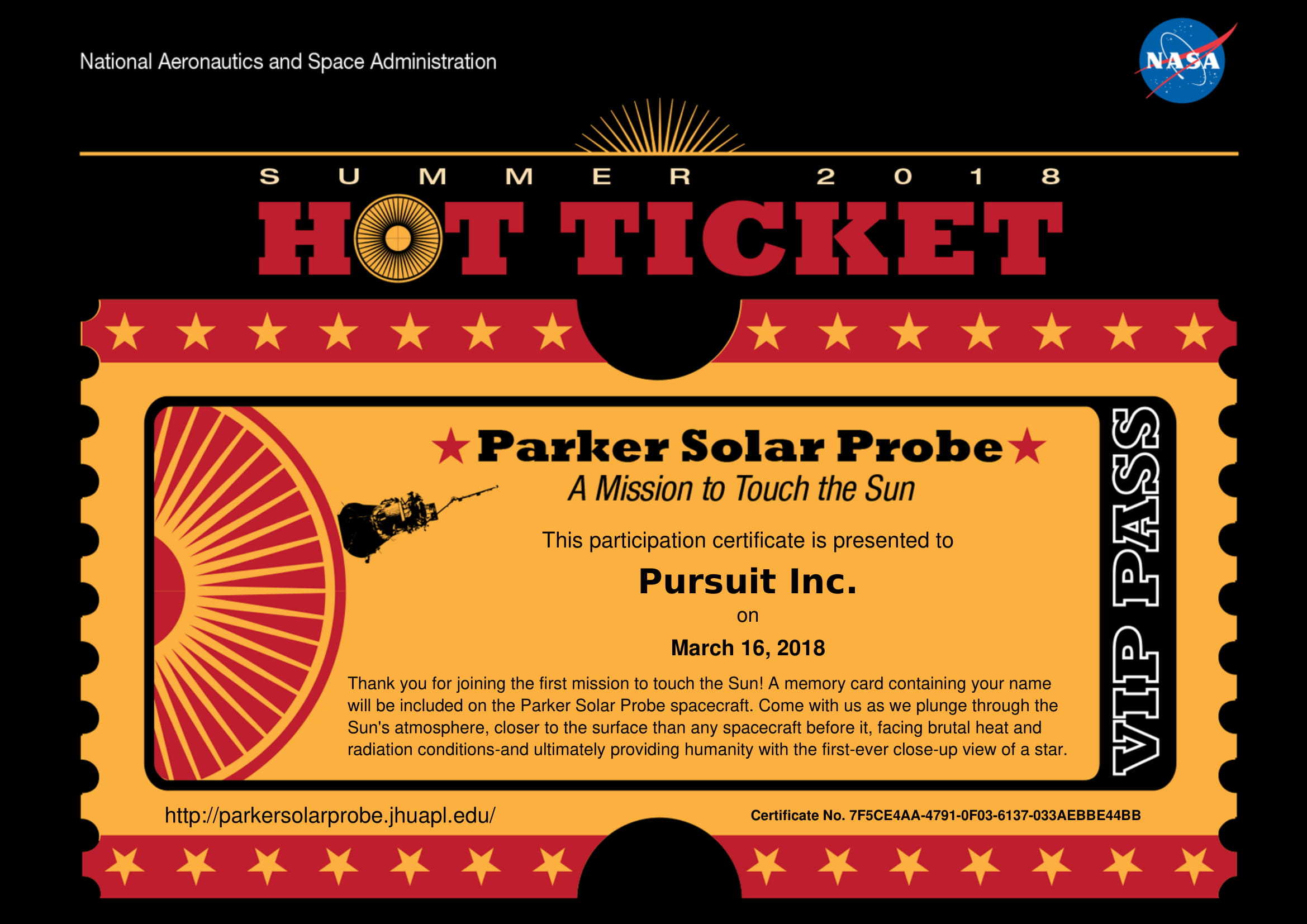William Shatner is sending his name to the sun, and you can too. The Star Trek star’s moniker will be included on a microchip that will catch a ride with NASA’s Parker Solar Probe (SPP). The probe will be studying the star this summer.
“The first-ever spacecraft to the sun, NASA’s Parker Solar Probe, will launch this year on a course to orbit through the heat of our star’s corona, where temperatures are greater than 1 million degrees,” Shatner explained in a new NASA video about the mission. “The spacecraft will also carry my name to the sun, and your name, and the names of everyone who wants to join this voyage of extreme exploration.”
Anyone can include their name on the microchip, for free, by visiting NASA’s Parker Solar Probe website here. Space adventurers have until April 27 to do so.
It isn’t the only time Shatner is sending his name into space. His name will be included among 2.4 million others on a microchip featured onboard NASA’s Mars InSight mission this May.
The SPP is scheduled to launch from Kennedy Space Center in Florida on July 31. According to NASA: “SPP will swoop closer to the Sun’s surface than any spacecraft before it, facing brutal heat and radiation conditions. The spacecraft will come as close as 3.9 million miles (6.2 million kilometres) to the Sun, well within the orbit of Mercury and more than seven times closer than any spacecraft has come before.”
It will perform 24 close flybys of the sun over the course of seven years.
The spacecraft and instruments will feature a 4.5-inch thick carbon-composite shield to protect them from the sun’s extreme heat. Temperatures outside the spacecraft will reach nearly 2,500 degrees Fahrenheit (1,377 degrees Celsius).
The probe will examine the sun’s structure, magnetic and electric fields, and solar wind, reports Space.com. The goal is to determine why solar wind is accelerated and why the sun’s outer atmosphere, the corona, is hotter than the surface.
“Parker Solar Probe is, quite literally, the fastest, hottest — and, to me, coolest — mission under the sun,” project scientist Nicola Fox, of the Johns Hopkins Applied Physics Laboratory in Baltimore, said in a statement. “This incredible spacecraft is going to reveal so much about our star and how it works that we’ve not been able to understand.”
The probe will be the fastest in NASA’s history, topping out at speeds of about 430,000 mph (690,000 km/h) during its closest approaches to the sun.


